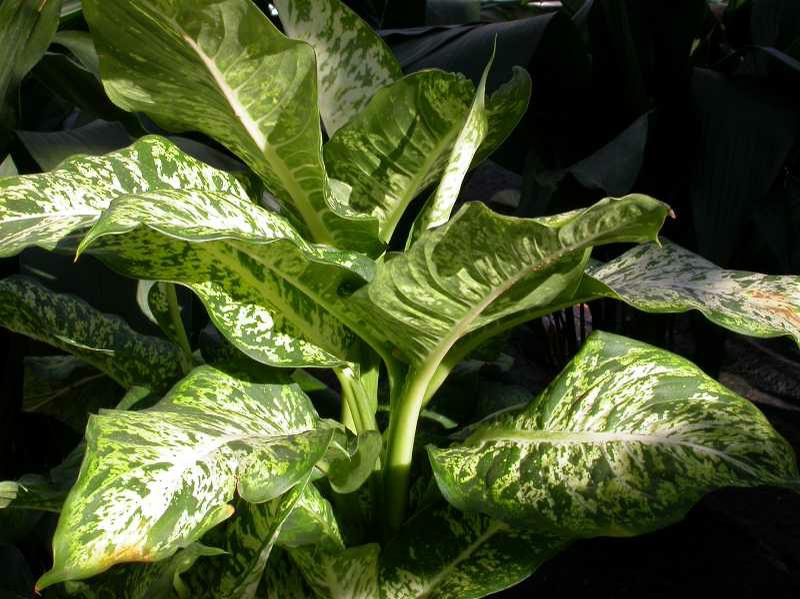Dumb cane (Dieffenbachia seguine)
Dumb cane
Dieffenbachia seguine, commonly called dumb cane is native to Brazil. It is a popular evergreen houseplant in the St. Louis area where it is widely grown for its attractive foliage. This is a clustered perennial that features ovate-oblong to oblong pointed shiny leaves (to 12” long). Leaves are variable in color, generally being green with patches or blotches of cream/white. As lower leaves fall off, the cane-like stem becomes noticable. In its native habitat, plants will grow to 6-10’ tall, however they are generally kept much smaller when grown indoors in containers. The name dumb cane refers to the toxic qualities of this plant. Sap burns the mouth and throat causing numbness and possible paralysis of the vocal cords. Sap can also irritate human skin and eyes. Calla-type flowers followed by red berries rarely appear on indoor plants. Cultivars and hybrids of this species expand the variegated leaf colors to include additional shades of yellow and green. Plants formerly designated as D. maculata and D. picta are now generally included in the within genus.
Genus name honors J.F. Dieffenbach (1790-186- in charge of the gardens of the royal palace of Schonbrunn at Vienna around 1830.

Dumb cane grows somewhat easily as an indoor plant in St. Louis. It prefers relatively high humidity but also tolerates some dryness. Pot may be placed on a bed of wet pebbles to increase humidity. Use a loamy, peaty, well-drained potting soil. Place in bright indirect light with protection from direct sun. Water regularly during the growing season, but reduce watering from fall to late winter. Allow soils to dry between waterings. Propagation from stem or root cuttings.
| Hardiness zone | 10 - 12 |
| Sun light | Part shade to full shade |
| Water | Medium |
| Maintenance | Medium |
Wear gloves when working with this plant. Sap is poisonous if ingested, and skin contact with the sap can irritate skin. Keep plants out of the range of pets and small children. Watch for spider mites, scale, aphids and mealybugs. Fungal leaf spot, rots and blight may occur.
Containers for bright indoor locations.
| Common name | Dumb cane |
| Botanical name | Dieffenbachia seguine |
| Plant type | Herbaceous perennial |
| Family | Araceae |
| Hardiness zone | 10 - 12 |
| Water | Medium |
| Maintenance | Medium |
| Flower color | White |
| Flowering period | Seasonal bloomer |
| Height | 3 - 10 ft. |
| Width | 2 - 3 ft. |